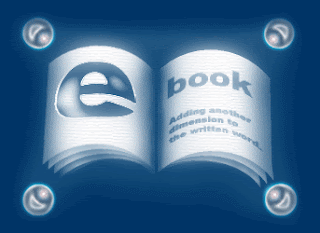Indian Polity and Constitution(Part-IV)
126. In
which year was the Supreme Court of India established?
a) 1949
b)
1950
c) 1951
d) 1947
127. The
protector of the Fundamental Rights guaranteed under the Constitution
is the
a)
Parliament
b) Prime Minister
c) President
d) Supreme Court
128. The
Constitution provides for a legal adviser to the State Government.
He is known as the
a) Public
Prosecutor
b) Solicitor General
c) Advocate
General
d) Government Pleader
129. An
Advocate General of a State is entitled to appear before
a) any court
of law within the country
b) any court
of law within the State
c) the
Supreme Court of India
d) District
and Sessions Courts
130. The
Governor may nominate one or more members of a certain community,
as members of the State Legislative Assembly. If no member of
that community seeks election to the Assembly. Name
the
community.
a) Parsis
b)
Jains
c)
Anglo-Indians
d) Buddhists
131. Every
judge of the High Court is appointed by the President of India, after
consultation with the
a) Chief
Justice of India
b) Governor
of the State
c) Chief
Justice of the High Court concerned
d) All the
above three institutions
132. In the
discharge of his functions, the Attorney General is assisted by a
Solicitor General and _____ Additional Solicitors General.
a) 2
b) 3
c)
4
d) 5
133. How
many Union Territories come under the jurisdiction of different
State High Courts?
a) 7
b) 6
c)
5
d) 4
134. The
Jammu and Kashmir High Court is located in
a) Jammu
b)
Srinagar
c) Udhampur
d) Both (a) and (b)
135. The
High Court of Uttar Pradesh is located in
a) Lucknow
b) Kanpur
c) Allahabad
d) Meerut
136. The
separation of the judiciary from the executive is envisaged in the
a) Preamble
b) Directive Principles
c)
Objectives Resolution
d) Fundamental Rights
137. The
total number of members in the Legislative Council of a State shall
in no case be less than
a) thirty
b)
fifty
c) sixty
d) forty
138. The
Union Parliament has the power to rename or define the boundary of
a State by
a) an
amendment of the Constitution
b) securing
the consent of the Prime Minister
c) securing
the consent of the Chief Minister of the State concerned
d) securing
the consent of the concerned State Legislature and Parliament’s
approval
139. Which
among the following languages is not recognised in the Indian
Constitution?
a) Sanskrit
b) Sindhi
c) Urdu
d) Pali
140. The
Official Language Commission is responsible to the
a) Prime
Minister
b) Speaker
of the Lok Sabha
c) President
d) Official
Language Commission
141. The
Union Territories get representation
a) in the
Lok Sabha but not in the Rajya Sabha
b) in the
Rajya Sabha but not in the Lok Sabha
c) neither
in the Lok Sabha nor in the Rajya Sabha
d) in both
the Houses
142. How
many Schedules did the original Constitution of India contain?
a) 7
b) 8
c)
9
d) 6
143. The
President of India is elected by
a) the
People of India directly
b) the Lok
Sabha and the Rajya Sabha at a joint sitting
c) the Union
Cabinet
d) indirect
election, by an electoral college
144. The
Attorney General for India does not have the right to
a) attend
Parliament sessions
b) attend
Parliamentary Committees
c) take part
in the proceedings of Parliamentary Committees by expressing his views
d) vote in
Parliament
145. Which
of the following is not a salient feature of the Indian Constitution?
a) A
Parliamentary form of Government
b) A
Sovereign Democratic Republic
c) Directive
Principles of State Policy
d) A federal
polity akin to the American model
146. Which
of the following is not a part of the Preamble to the Indian
Constitution?
a) Socialism
b)
Secularism
c)
Federalism
d) Sovereign
Democratic Republic
147. The type
of government adopted by the Indian Constitution is
a)
Aristocracy
b) Oligarchy
c)
Presidential
d) Parliamentary
148. Which
one of the following has been wrongly listed as a qualification
for the election of the President of India?
a) Must be a
citizen of India
b) Must have
completed 35 years of age
c) Must be
qualified for election to the Rajya Sabha
d) Must not
hold any office of profit under the Government of India or of a
State
149. The
President of India can be removed from office by impeachment
for
a) violation
of the Constitution of India
b) failure
to follow the advice given by the Supreme Court
c) failure
to pay income -tax
d) contempt
of court
150. Who
among the following was elected as the President of India unopposed?
a) Dr S
Radhakrishnan
b) VV Giri
c) Neelam
Sanjeeva Reddi
d) Giani Zail Singh
ANSWER
126. b
|
127. d
|
128. c
|
129. b
|
130. c
|
131. d
|
132. c
|
133. b
|
134. d
|
135. c
|
136. b
|
137. d
|
138. a
|
139. d
|
140. c
|
141. d
|
142. b
|
143. d
|
144. d
|
145. d
|
146. c
|
147. d
|
148. c
|
149. a
|
150. c
|









0 comments:
Post a Comment